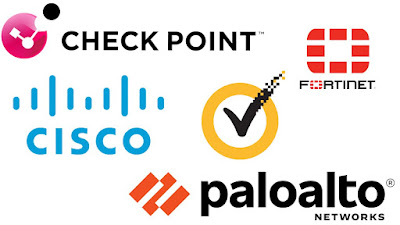Cybercriminals are constantly coming up with new ways to
exploit fraud against governments, huge firms, and companies of a small to
medium scale. Criminal organizations exploit both the increasing geopolitical
tensions and the volatile economic climate to further their own political,
financial, or social objectives. The evident escalation of this phenomenon was
observed in the year 2022, as the incidence of worldwide cyberattacks witnessed
a notable increase of 38% in comparison to the preceding year. Furthermore,
indications suggest that this trend is expected to persist unabated throughout
the year 2023. The results of our study on cyber-security indicate that this
became abundantly clear in 2022.
As hackers want to inflict the most amount of havoc
possible, they are moving their attention from people to organizations, which
significantly increases the likelihood that several attack paths will be used.
Due to the intricate nature of the threat landscape, ensuring that one's
organization possesses the most efficient security protocols should be regarded
as a paramount priority. But what does it look like?
One way to do this is to adopt a security approach that is based on the 3Cs: comprehensive, consolidated, and collaborative.
Comprehensive
The complexity of potential attack routes is always growing
and changing. Guaranteeing the protection of company information, encompassing
email systems, Internet of Things (IoT) devices, cloud networks, and endpoints,
should be regarded as a paramount concern for your organization. In the event that one vector is not closed,
this might result in a significant breach of important infrastructure,
analogous to the assault on the Colonial Pipeline. To proactively prevent the
emergence of a problem, it is imperative to seek a comprehensive solution that
accounts for all potential factors and variables.
Consolidated
A consolidated security approach means using a single
platform to manage all of your security tools and policies. This makes it
easier to get visibility into your security posture and to respond to incidents
quickly.
The most recent generation of advanced cyberattacks may
swiftly propagate across all vectors and often circumvent traditional defenses.
In order to defend themselves against these kinds of assaults, firms often
implement several-point solutions, many of which result in redundant work and
separate channels of communication. According to the findings of a survey that
was carried out by Dimensional Research and Check Point, 49% of all firms
utilize between 6- and 40-point security solutions and 98% of enterprises
control their security products using numerous consoles, which creates
visibility blind spots.
In recent years, there has been a change in emphasis, and a
research conducted by Gartner reported that 75% of firms were seeking security
vendor consolidation in 2022, which was an increase from the 29% who did so in
2020. The purpose of reducing overall risk was cited by 65 percent of
respondents to the poll as the motivation for taking this action. Organizations
may improve their security and save money by lowering the amount of operational
overhead required to connect various siloed solutions if they adopt a
consolidated design. This architecture improves the coordination and efficacy
of security measures.
Collaborative
The incorporation of a collaborative strategy may serve as a
determining factor in achieving either success or failure. When, for example,
an attack is launched against an endpoint, all other security solutions across
the cloud, the network, and email must act and react appropriately to stop the
assault from entering via their respective vendors. In order to accomplish this
goal, the integrated and comprehensive architecture has to guarantee that each
security engine is applied to each and every attack vector. In addition to
this, real-time threat intelligence information that has been obtained from all
enforcement points, research teams, and third-party feeds has to be transmitted
across the environment so that quick action may be done to avoid the attack.
The best possible approach is to integrate an application programming interface
(API) solution, with the systems of third parties in order to deliver the most
accurate real-time data. This can help you to stay ahead of the curve and to
protect your organization from ever growing emerging threats.
There are many different security providers on the market, but some of the best include:
- Check Point
- Cisco
- Fortinet
- Palo Alto Networks
- Symantec
Studies on the 3Cs of Best Security
There have been numerous study that have shown the benefits
of adopting a security approach that is based on the 3Cs. A study conducted by
the Ponemon Institute revealed that organizations that adopt a comprehensive
security approach exhibit a 50% reduced likelihood of encountering a data
breach.
A separate investigation conducted by Forrester Research
revealed that establishments that adopt a unified security strategy have the
potential to achieve a reduction of up to 20% in their security expenditures.
According to a study conducted by the SANS Institute,
organizations that adopt a collaborative security approach exhibit a 30% higher
likelihood of promptly detecting and responding to security incidents.
Conclusion
The 3Cs of best security are a comprehensive, consolidated,
and collaborative approach. Organizations possess the capacity to enhance their
security stance and reduce the probability of being compromised by adhering to
this strategic approach.
If one is currently seeking a security provider, it is
highly recommended to carefully consider one of the aforementioned top five
services. The above-listed service providers have a demonstrated history of
delivering comprehensive, integrated, and cooperative security solutions.
I really hope that this blog article has provided you with some useful knowledge on the three components that make up the finest security.


.jpg)




0 Comments